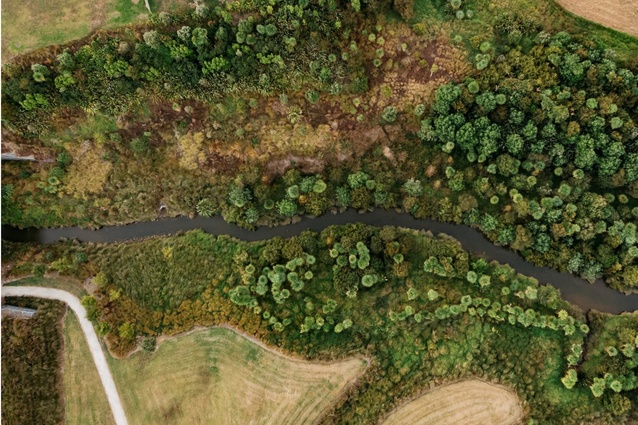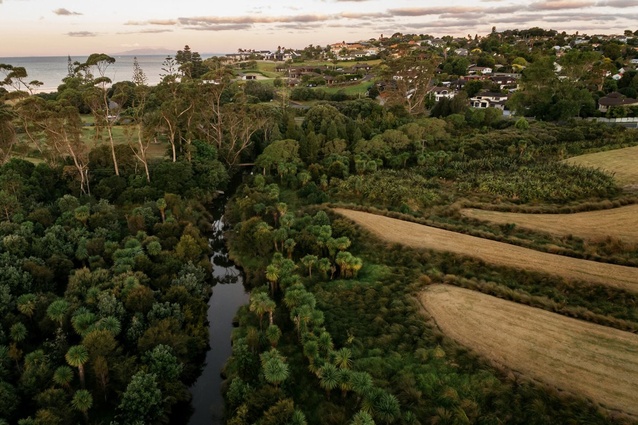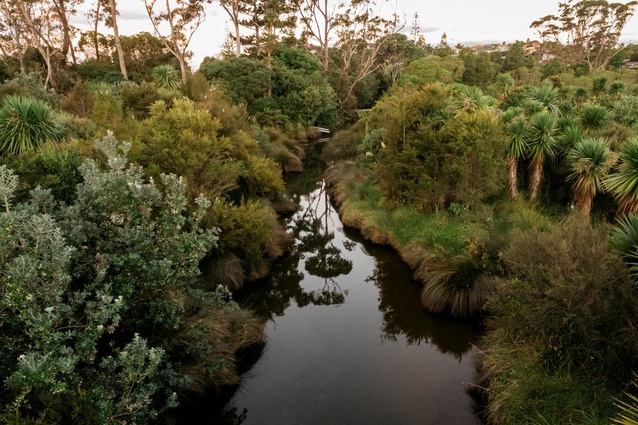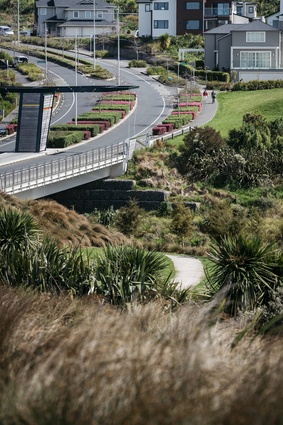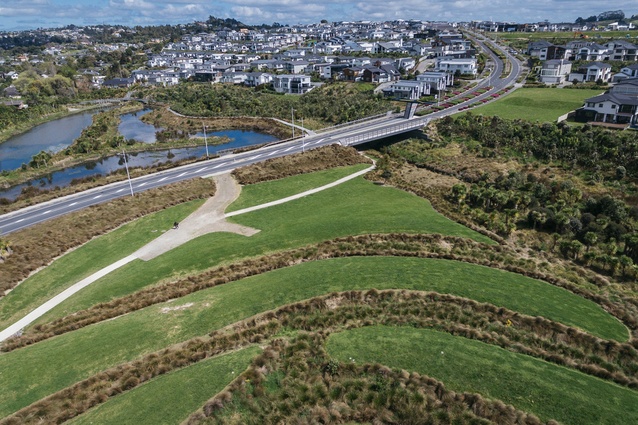Integrated urban form: Long Bay development
The Long Bay development, half an hour north of Auckland city, involves the urbanisation of a large-scale landholding by a single developer in a sensitive natural environment. This provided the opportunity for landscape architecture and ecology to form the basis of the master planning approach which aimed to strike the right balance between efficient use of land and protection and enhancement of the natural environment.
The carefully master-planned development now comprises 2,500 homes, a village centre, a comprehensive stormwater treatment system and 28ha of new park and reserve land including a heritage protection area.
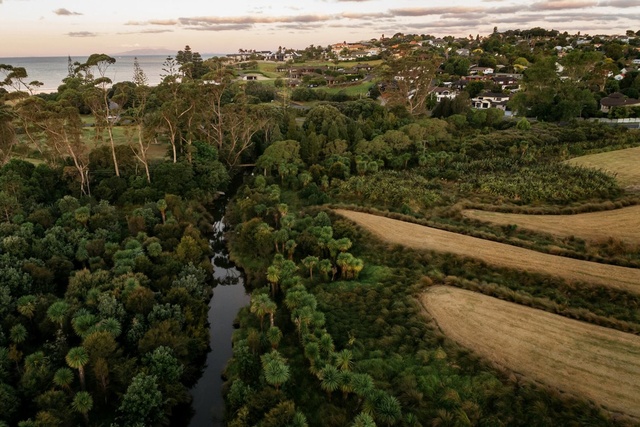
Boffa Miskell first became involved with the Long Bay development over a decade ago. The company was engaged by Todd Property Group as part of the master planning team for the development, providing landscape design and ecological advice, and then leading the development of the designs for the public landscapes of the over twenty stages of the development.
This included the design detailing, documentation and contract management for planting implementation in streets, walkways, wetlands, riparian margins and revegetation as well as developing weed and pest management for landscape protection areas.
Boffa Miskell’s ecology consultants undertook extensive research on stream habitat and quality, lizard relocation and habitat creation, and provided input to ensure that the overarching goals of ecology and sustainability were a constant design driver.
The landscape is designed to strongly integrate ecologically with the natural gully, stream and coastal environs through extensive planting.
Plant selection across the project respects the natural coastal character and greatly enhances the biodiversity of the area. Species selection was carefully considered to ensure natural regeneration occurs through all revegetation areas.
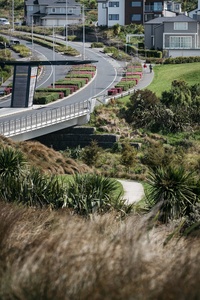
Some of the initial revegetation and riparian planting is into its eighth year of establishment and continues to function as a successful planting composition. Riparian planting mimics the natural ecosystems found within lower, mid and upper reaches with species selection carefully situated to reflect the subtle changes in the environment or function.
The key ecological outcomes gained as a result of the extensive riparian and revegetation planting include increased extent and quality of indigenous terrestrial vegetation cover, with improved connectivity and ecological functionality; increased extent and condition of freshwater habitats as a result of riparian revegetation; and long-term protection and management of indigenous vegetation and selected open grassland habitats occurring within the site.
Overall, this has increased the biodiversity within the Long Bay development area through increasing the available habitat and level of protection. Where previously streams had no riparian planting or were damaged, they are now benefiting, with thriving numbers of native fish including the banded kokopu.
The overall goal of the project was to provide an integrated urban form, ecological framework and landscape framework that demonstrates on a large scale how a ‘green infrastructure’ can be layered throughout a new urban development. The project has been used as a design exemplar in the Auckland Design Manual and Code of Practice.
This article was first published on the Landscape Architecture Aotearoa website, which is published by the New Zealand Institute of Landscape Architects (NZILA).

